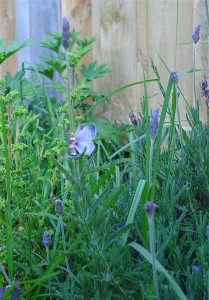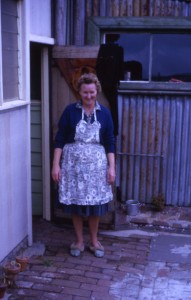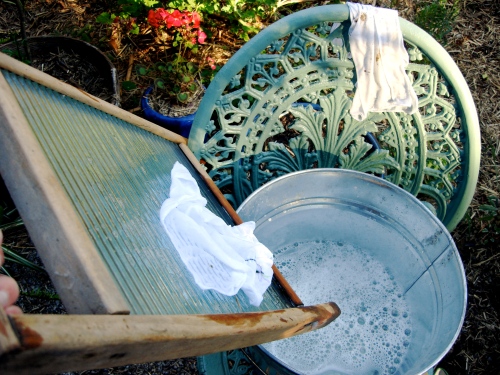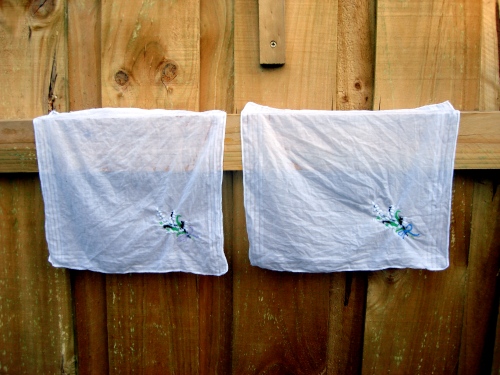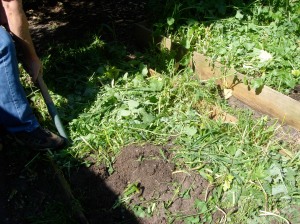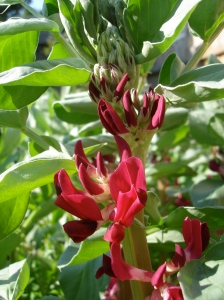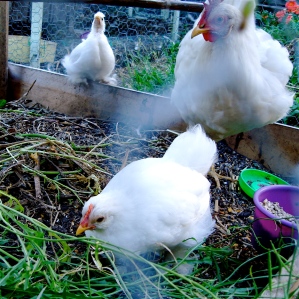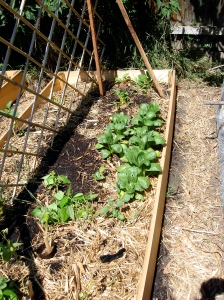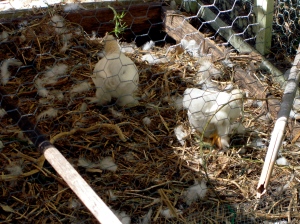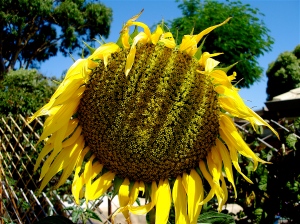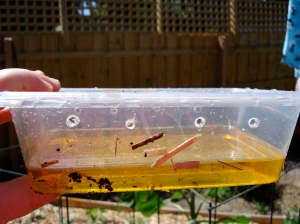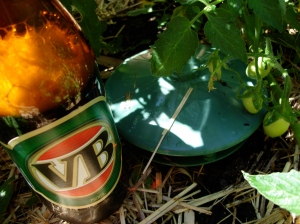First Published – 20 January 2010
It’s a hot hot summer’s day here in Melbourne, Australia, and in a fashion entirely inappropriate to the position of Under Gardener, I’m in my back yard drinking Pimm’s and Lemonade while harvesting Lavender.
Lavender is widely quoted as one of Queen Victoria’s and hence the Victorian era’s favorite scents.
“It is generally known that the Queen is a great believer in Lavender as a disinfectant, and that she is not at all singular in her faith in this plant… The royal residences are strongly impregnated with the refreshing odour of this old-fashioned flower, and there is no perfume that the Queen likes better than Lavender-water, which, together with the oil for disinfecting purposes, Her Majesty has direct from a lady who distills it herself.” Fragrant Flowers, 1895.
I love growing lavender. It thrives in our Mediterranean climate and does very well in the free-draining sandy soil in my backyard. To keep it flowering well I make sure it doesn’t get too dry on hot sunny days. I give each bush a light pruning after I have removed the flower spikes for drying. The pruning helps to keep the bush from getting leggy and in some years encourages a second flush of flowers. Bonus!
Victorian Head Gardeners were responsible for harvesting the lavender spikes and tying them into paper cones for drying. The drying, processing or distillation of the lavender then fell into the domain of the Housekeeper who managed the Still Room with her maids.
I dry my lavender in the same way by hanging the paper cones of flowers in a dry dark spot in my laundry. It only takes a week to dry in warm weather. Hanging the flower spikes upside-down also helps to keep the spikes straight which is useful if you are going to use them in dried flower arrangements.
The Victorian House Keeper would place bags of dried lavender flowers amongst stores of linen to perfume the cloth and help prevent attack by Clothes Moths. My Mum’s Mum, my Nanna, told me that her mother Susan (a Victorian Country Woman ) keep a lavender bush by her clothes line on which she draped her favorite pocket handkerchiefs to dry and pick up the scent of lavender.
I’ve often wondered how women in my family, during the Victorian Period, managed life in the newly settled State of Victoria in Australia. It’s very easy to find information about the daily life of the ‘big English Victorian house’ but very difficult to find out about the lives of people such as my Great-Grandmother living in rural Australia. What I know about her is from snatches of stories passed down from Nanna to me. The same is true for my father’s family who, by contrast, lived in an inner Melbourne working class suburb from the mid-Victorian era to the 1980′s. Stories I do have about my Great-Grandmothers relate mostly to domestic chores and, surprisingly, to how they did their laundry!
The house built by my paternal Great-Grandfather still had its original corrugated-iron lean-to laundry when I was a small girl. I remember my Grandma boiling sheets in a copper cauldron and then helping her to wring them out through an old winding mangle. It seems amazing to me now, as I stuff another load of clothes into the front loader, that basically Victorian laundry techniques were still in place in Melbourne in the early 1970′s!
Mrs Beeton outlines the duties for a Laundry-Maid in paragraph 2372 of BOHM. There is another great description of Victorian laundry practice in the novel Lark Rise to Candleford written by Flora Thompson describing her life in late 19th century Oxfordshire. She explains how the clothes were laundered every two weeks by a visiting Laundry Woman. Flora explains that washing the clothes this infrequently showed that a family had enough money to afford enough clothes to wait that long between washes (when I don’t get to the laundry this week – this is how I plan to sell it). Neither of my Great-Grandmas were affluent enough to send laundry out or hire help in. I can’t imagine what a thankless task it was to boil clothes clean in a hot Melbourne summer – blah!
I am really interested in the idea of ‘blueing’ that both Beeton and Thompson described. This is the practice of putting a light temporary blue dye in the rinse water for white linen to make it appear whiter. Today washing powder contains sophisticated optical whitening chemicals so the use of blue or Fig blue as Beeton calls it is rare. So does it work?
When discussing this with my Mum she found that she still had some of Nanna’s Reckitt’s Blue bags in the laundry and was happy to give me a couple to experiment with. Here are the results.
I discovered that using a washboard is extremely tiresome. Washing an entire household’s laundry this way would give you the shoulders of an olympic swimmer. It did eventually get the dirt out. I used an Australian washing detergent from the Victorian era that my Great-Grandmothers would have made from scratch using this recipe. It is free of whitening agents and available ready made in Australia today. I remember grating soap on a cheese grater for my Grandma when she was making a batch – it still smells like my childhood to me.
Then I dunked the bag of Blue into the rinse water until the water was a pale blue in colour.
It is difficult to see in the photos that I’ve taken but the Hanky dunked in the blue rinse looked blue at first rather than white.
Opinions in this household vary but I really couldn’t see a difference between the blued hanky and the other one. It could be that the bluing works more effectively on older linen that tends to yellow as it ages. I might try again if I find a piece of old fabric.
I guess this has strayed a long way out of the territory of the Under Gardener.
So bringing this discussion back to the garden. My Grandmothers, as their Mothers did, loved the scent of lavender and kept bags of dried lavender with their hankerchiefs. Grandma used lavender water to spray linen while ironing to help remove wrinkles and scent her sheets (ironing sheets seems unnecessary but I think this was one of her little luxuries). I like growing lavender as it is a plant that connects me to the women in my family and back to my Great-Grandma’s laundry rituals.
If you feel inspired to try Lavender Water here is a modern version of the Victorian Recipe for Lavender Water that I use at home.
Lavender Water
100ml (4 fl oz) Vodka
10 drops Lavender Oil
500ml (17 fl oz) Water
Add all ingredients to a Pint Spray Bottle and shake to mix. It will keep indefinitely. Spray it around the house to kill odours, on ironing for smoothing or keep some in the fridge to spray on you on hot days. It is also fairly good at killing the ‘wet dog smell’ on woollens that have got damp in winter.
Just be-careful not to use it as a cocktail mixer by mistake!
